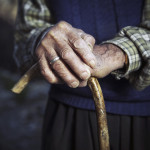The need to better understand the health care needs of older HIV-positive people is growing increasingly urgent. Thanks to the life-extending benefits of antiretroviral (ARV) treatment, individuals at the upper end of the age spectrum among those living with the virus today will become the first sizable generation to live into their golden years.
The life expectancy of people who are well treated for the virus is approaching normal, especially for those who do not smoke or abuse substances and do not have hepatitis B or C viruses (HBV/HCV). At the beginning of the 2010s, a bit over a third of the U.S. HIV population was 50 or older. By the start of the next decade, that proportion could swell to one half.
Considerable research has illustrated that HIV, even when fully suppressed by ARVs, is associated with various diseases related to aging. People living with the virus tend to experience conditions such as cardiovascular disease at younger ages and at higher rates overall.
Studies of the increased risks of various health conditions among older HIV-positive people tend to look at those who are 50 or older. Now, for the first time, researchers have conducted a study looking at the health challenges of actual seniors, those 65 and older.
When Eleanor E. Friedman, PhD, a fellow at the Oak Ridge Institute for Science and Education, noticed while poring over national HIV surveillance data in 2012 that there were 25,000 people 65 and older living with the virus in the United States, she realized that a considerable number of older HIV-positive individuals weren’t getting the attention they deserved. Previous research about older people with HIV hadn’t specifically addressed this group.
So Friedman and her colleagues decided to conduct an analysis of Medicare beneficiaries to compare various disease rates and other factors between seniors with HIV and those without. Publishing their findings in the October 23 edition of the journal AIDS, they looked at data from 2006 to 2009 on 29 million U.S. residents, of whom 24,735 (0.09 percent) were HIV positive.
The HIV-positive cohort was about a median five years younger than those in the HIV-negative group. Those living with the virus were almost twice as likely to be male and five times as likely to be African American or Latino rather than white.
The researchers found that the HIV-positive individuals were about twice as likely as those who did not have the virus to show signs of high blood pressure, hyperlipidemia (which includes high cholesterol), coronary artery disease, rheumatoid arthritis or osteoarthritis, or diabetes. After adjusting the data for various factors, including sex, race and kidney failure, they found that living with HIV was associated with an increased risk of: diabetes by a factor of 1.51-fold; hyperlipidemia by 1.81-fold; coronary artery disease by 1.82-fold; high blood pressure by 2.01-fold; and rheumatoid arthritis or osteoarthritis by 2.14-fold.
The analysis also showed that seniors with HIV were more likely than seniors without the virus to have one or more other chronic health conditions. With each additional condition, the risk-factor gap between those with HIV and those without continued to widen, such that compared with the HIV-negative group, the HIV-positive cohort was about four times more likely to have four other conditions and seven times more likely to have five.
Scientists are still hard at work determining the reasons for such higher rates of aging-related disorders and are looking into the negative effects of the chronic inflammation and dysregulation of the immune system associated with even well-treated HIV and the effects of antiretrovirals (ARVs) themselves on organs such as the kidneys and liver as possible causes. The HIV population also has a higher rate of various detrimental lifestyle factors such as substance abuse that can play into HIV-positive individuals’ risk of such health conditions.
Friedman is keen to stress that while it may be overwhelming to think about the possibility of dealing with multiple health problems on top of HIV, these conditions need not be life-threatening or significantly diminish one’s quality of life.
“These are not uncommon diseases as you hit 65 and up,” she says, noting the importance of conducting regular screenings in order to detect signs of these conditions as people with HIV age and provide appropriate treatment if necessary. “And they’re manageable diseases, much in the same way that HIV has become chronic.”
One key way for people with HIV to reduce their risk of aging-related disorders is to practice healthy behaviors. This means refraining from smoking, eating a proper diet, getting exercise and refraining from substance abuse, including excessive alcohol consumption.
“It’s not destiny,” Friedman says of the development of chronic health conditions on top of HIV.
Friedman questions how the higher incidence of multiple conditions among seniors with HIV may affect their medical care providers. As treating HIV has become simpler compared with the early days of effective combination ARV treatment, there has been a push toward having general practitioners— as opposed to infectious disease specialists— care for people living with the virus,. But if older HIV-positive people begin experiencing multiple aging-related conditions, a general practitioner may want to defer to a geriatric specialist. And those clinicians who specialize in treating geriatric patients may not feel equipped to treat someone with HIV.
The solution, Friedman says, may be a well-coordinated team of doctors with different specialties who confer with one another about mutual older HIV-positive patients through phone calls or other methods. Such open communication and teamwork may be especially important if someone is taking multiple medications for different reasons, so as to prevent interactions between drugs and minimize side effects.
“This is the ‘it takes a village’ idea,” she says.
“I think on a day-to-day level for people living with HIV, the most important thing is to be functional and happy,” Friedman is eager to note. “I would like it not to be just, ‘Isn’t it great you now have an almost normal life span?’ but, ‘Isn’t it great that you now have a normal life span and every day you wake up and feel relatively good?’”







8 Comments
8 Comments